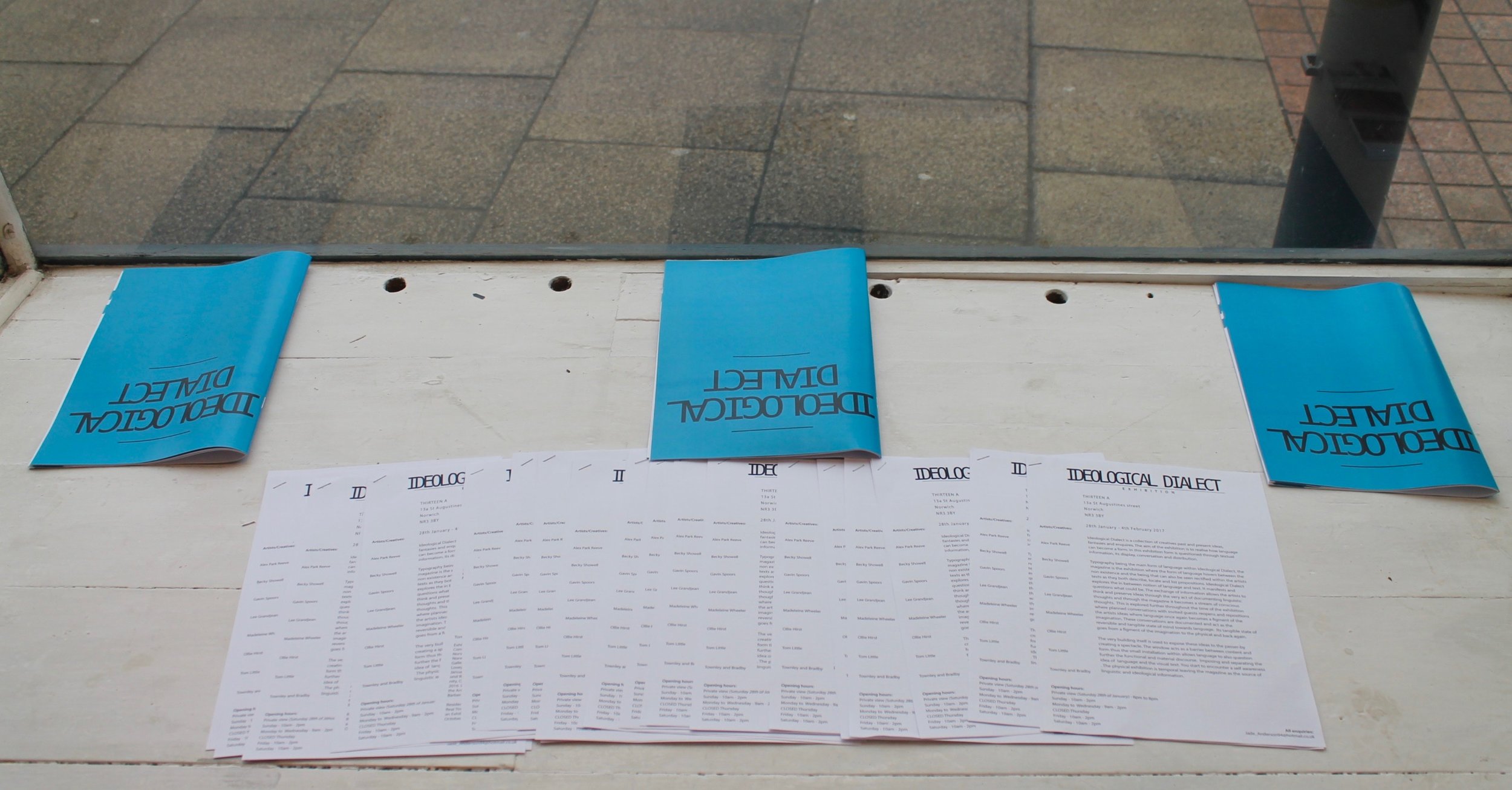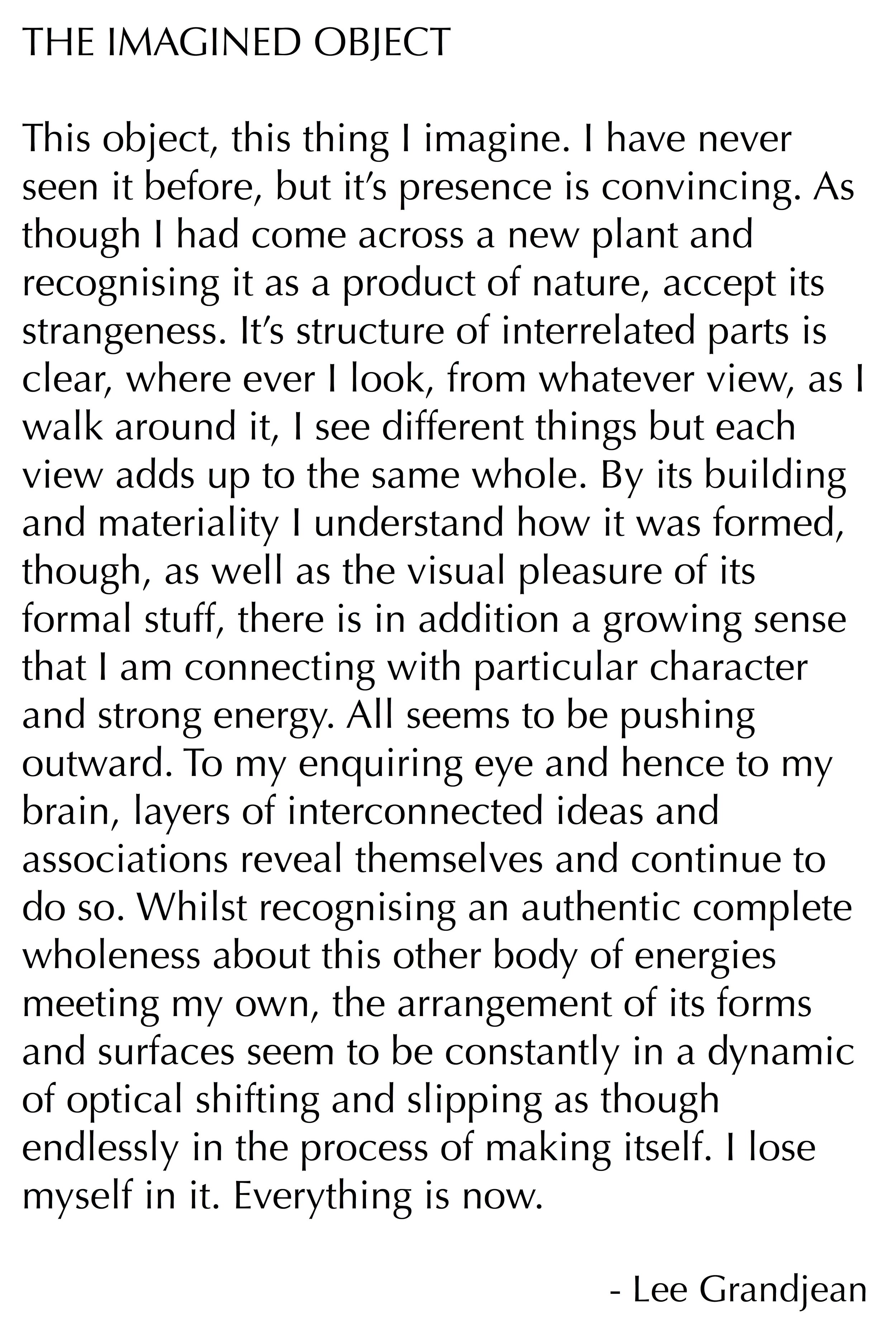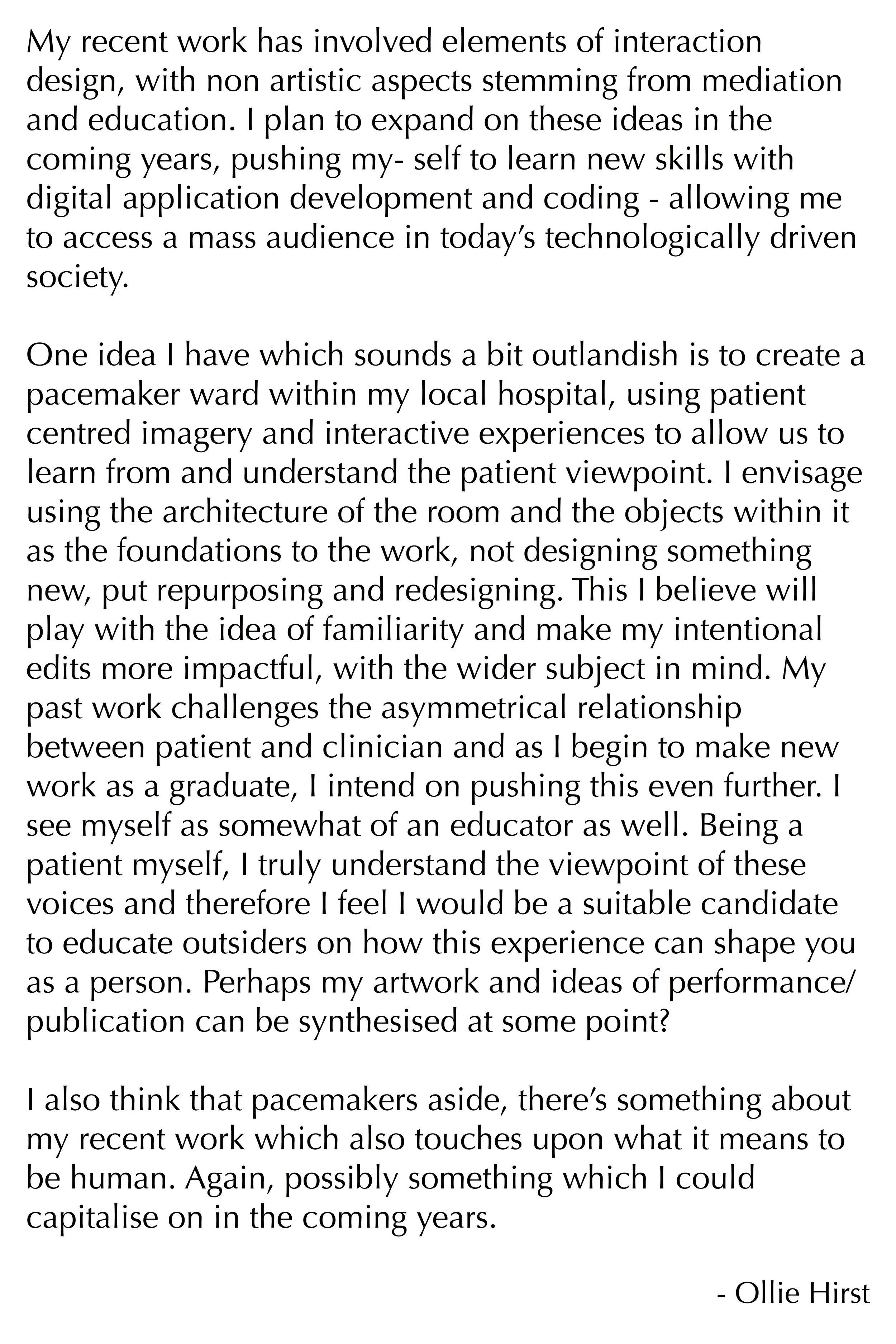Ideological Dialect
Alex Park Reeve, Becky Showell, Gavin Spoors, Lee Grandjean,
Madeleine Wheeler, Ollie Hirst, Tom Little, Townley and Bradby
THIRTEEN A Gallery
13a St Augustines Street Norwich
NR3 3BY
28th January - 4th February 2017
Ideological Dialect is a collection of creatives past and present ideas, fantasies and enquires. The aim of the exhibition is to realise how language can become a form. In this exhibition form is questioned through textual information, its display, conversation and distribution.
Typography being the main form of language within Ideological Dialect, the magazine is the exhibition where the form of language hovers between the non existence and the being that can also be seen rectified within the artists texts as they both describe, locate and list propositions. Ideological Dialect explores the in between notion of language and text. It manifests and questions what could be. The exchange of information allows the artists to think and preserve ideas through the very act of documenting linguistic thoughts and through the magazine it becomes a stream of conscious thoughts. This is explored further throughout the time of the exhibition where planned conversations with invited guests reopens and repositions the artists ideas where language once again becomes a figment of the imagination. These conversations are documented and act as the reversible and tangible state of mind towards language. Its state of goes from a figment of the imagination to the physical and back again.
The very building itself is used to expose these ideas to the passer-by. The window acts as a barrier between content and form thus the small space within allows language to also question further the functional and material discourse. Imposing and separating the idea of language and the visual text. You start to encounter a self awareness. The physical exhibition is temporal leaving the magazine as the source of linguistic and ideological information. 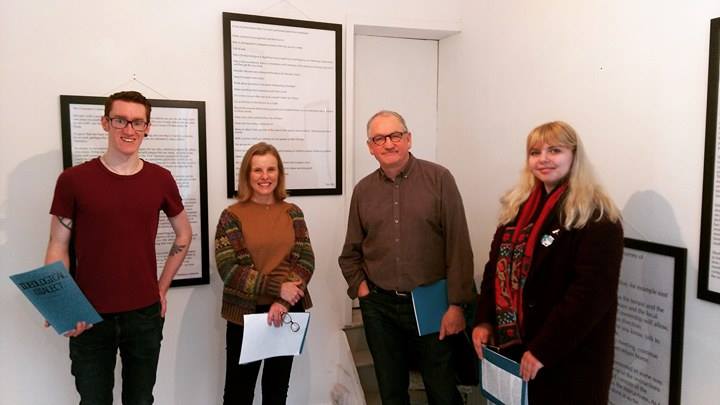
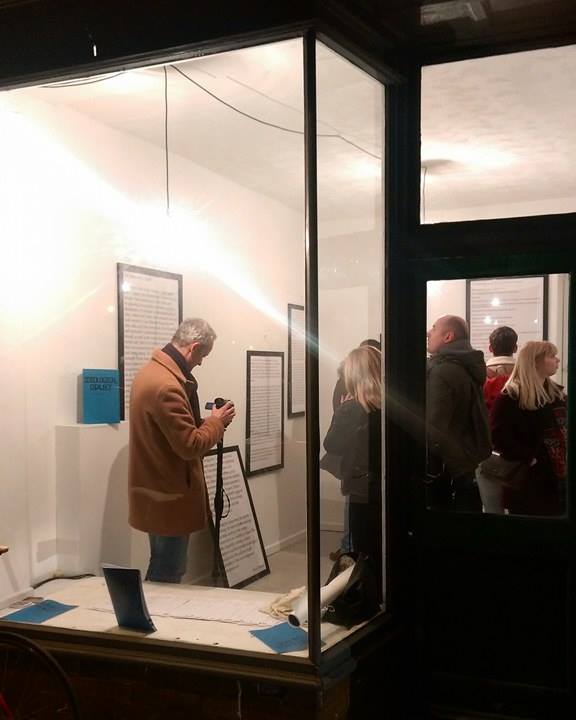
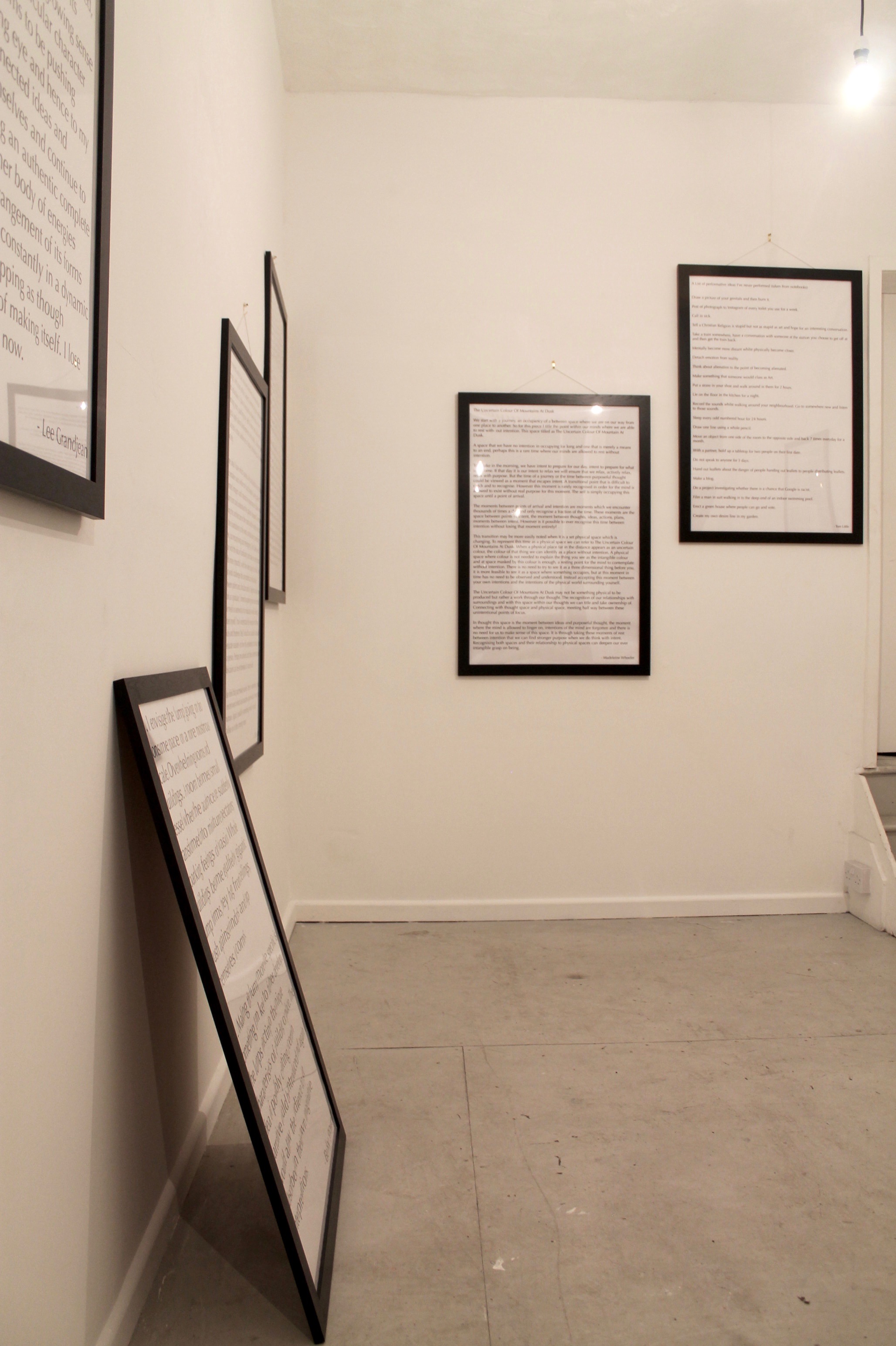
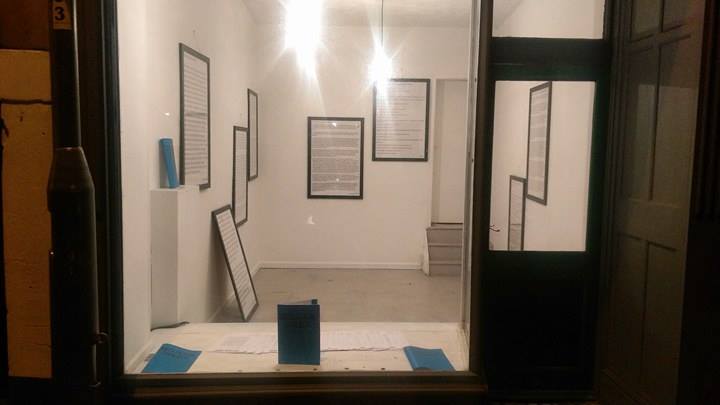

Artists In conversation review: Led by JMC Anderson and Curator Caroline Fisher
Artists in conversation:
Becky Showell
Gavin Spoors
Lee Grandjean
The discussion started by asking the artists whether my call out helped them realise or recognise anything about the work for which Becky Showell undoubtedly believed that this was the case. The floatation of ideas in the non-existent realm of the mind is pinpointed and somewhat concreted as something that now has to happen. It becomes a physical object that is grounded and we can view and see it. A suggestion that came from a visitor throughout the show was what about a lumpy story book ? I replied yes! Yes a lumpy story book of perhaps the lumps popping up in environments in and around multiple locations but documented through this idea of a type of book, or even a trail. Another thought in connection to the idea of space was of course creating a type of illusion to reduce the time of making multiples such as Yayoi Kusama’s ‘All eternal love I have for pumpkins’ produced in 2016.
Leading onto Lee Grandjean’s ‘THE IMAGINED OBJECT’, in connection to the physical, he himself explained how he explored the very embodiment of the idea of something becoming a form in response to the invite. We spoke of the feeling and love of generating a work, the very feeling of making that somewhat goes unnoticed when presenting physical and finalised pieces. In which case we decided like Madeleine Wheeler’s, ‘The Uncertain Colour Of Mountains At Dusk’, that the text is an abstract, an abstract of the mind where the very framing of the works bounds it in the reality and physical space. It is situated only to become a bubble itself. You want to know more within both Grandjean’s and Wheeler’s works as they leave you slightly perplexed in this space of thought presenting a new way of reading and seeing ‘the work’. The curated room, this bubble that is made up of these ‘ideas’ hangs in the balance of existence. From the knowing that they were and maybe still are non existent to then visually being able to see them as a type of object within the space, allows myself, the artists, us, to explore the between.
Grandjean mentioned how there could be an overcrowding of textual information within exhibitions where the audience are forced to firstly read the information. Curator Caroline Fisher also added how the audience member firstly looks at the reproductions on handouts rather then going to experience the work firstly. This debate with text is one that I feel is particularly tricky and an issue that most probably occurs more so with the rift between curators and artists, for which I sit in between both frameworks. I explained how text and language for me is to create a new way of both reading where the language is the artwork and the additional information in which Grandjean agreed. This was the reason why he was interested in the project. The text is the work, the text does not invade the physical creation because the text is exactly that.
The space in between formality was also somewhat mentioned within Gavin Spoors works where we spoke of the frustration and the reality of trying to get yourself into the world. The navigation in which Caroline Fisher mentions from Spoor’s text, is the thats he describes the work and the struggle to then going of into tangents of deep thought about other projects and possibilities is riveting. He creates a picture of the atmosphere around both himself and within. Again opening up unknown/unfamiliar territory. This particular work by Spoors was visually more fuller looking where the scale of the typography was smaller as were others, such as Ollie Hirst’s and Alex Park Reeve’s. The scale of the typography changed depending on how much the artist had written. Doing this shows the signs of curitorialship and judgement becoming a visually engaging transition in which like the frames helps the audience view the work individually and as a whole as suggested by a visit from Harriet Loffler curator at Norwich Castle.
Both Ollie Hirst and Alex Park Reeve spoke in quite a scientific and doctoral manner which was pointed out by us all. We suggested that they should get people within these fields of expertise to really look at what they are trying to do. Alex Park Reeve has actually started making demonstrations of this dust collector that he speaks of. Visitors have suggested other materials that he may want to use such as Agar Jelly and Harrie Loffler speaking of reading into Invisible Dust. It’s these suggestions that come from the visitors that really starts to initiate the push and pull on these ideas created and the forms that this language explored can become. Together we spoke about how Ollie Hirst could also perhaps create a demo of these ideas through creating a type of installation or performance to really record this thinking and in order to present this to the right industries. We were then informed by Spoors that they actually collaborated in making a showcase of an interactive battery operated toolkit designed to aid between the pacemaker and the patient. So maybe similarly to this he can recreate a ward ? Without a doubt there is a nice cross over here between being and the mechanical.
Looking at the closing of thought in Tom Little’s text ‘A list I’ve never performed (take from notes)’ already insinuates an end. The positioning next to Madeleine Wheeler’s shows a juxtaposition between opening and closing. Most visitors found the instructions of self very humorous, however yet it was also questioned within our conversation as to whether these instructions were left because they had actually already been done, not by Little but by others. Nevertheless the approach is personal therefore the audience can’t open it up in order for it to be explored further. The notes have already been given a form, the form being the sketchbook and instruction for ones self.
Written by JMC Anderson
01/02/17



